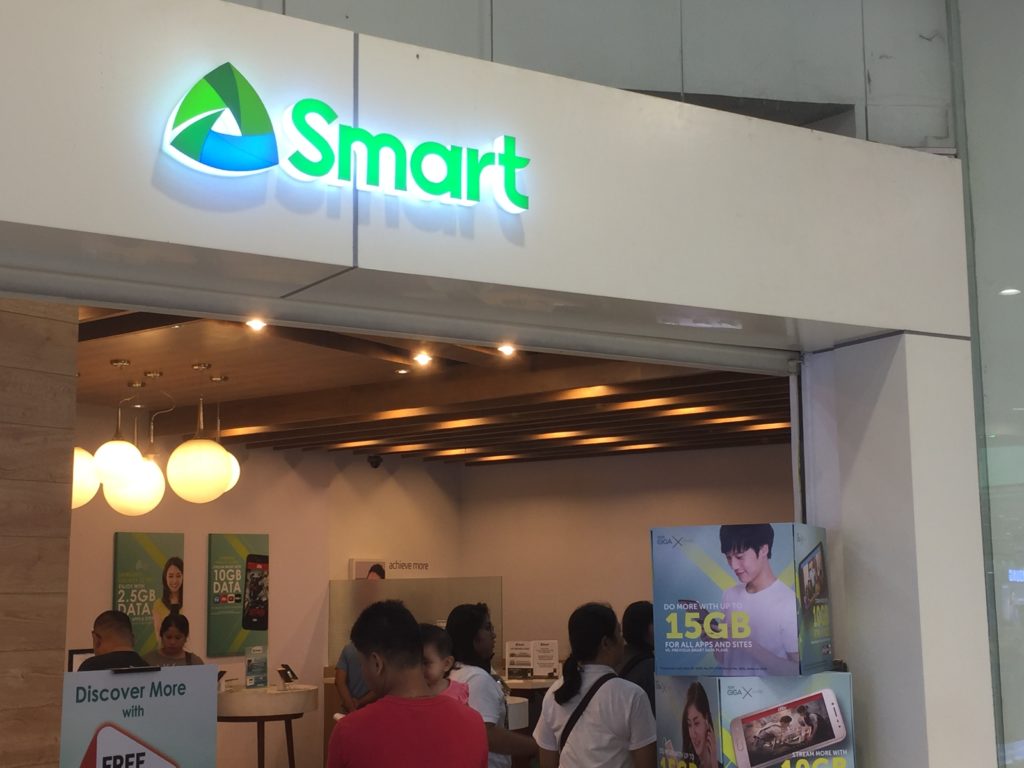TELECOM | Smart speeds up LTE-A roll-out
PLDT wireless arm Smart Communications, Inc. (Smart) is ramping up its roll-out of Long Term Evolution-Advanced (LTE-A) and carrier aggregation technology on its network to improve the mobile internet experience of Smart, Sun and TNT customers across the country.

PLDT wireless arm Smart Communications, Inc. (Smart) is ramping up its roll-out of Long Term Evolution-Advanced (LTE-A) and carrier aggregation technology on its network to improve the mobile internet experience of Smart, Sun and TNT customers across the country.
Of LTE sites nationwide, 71% are already on LTE-A, while 5-component carrier aggregation can also be enjoyed in Metro Manila.
LTE and LTE-A are the best technologies for mobile data. A key feature of LTE-A, carrier aggregation (CA) allows the combination of two or more radio frequency bands in order to deliver much faster data speeds to mobile phone users. 2-Component Carrier (2CC) carrier aggregation features the combination of two frequencies, while 3CC involves three frequencies and 4CC, four bands. In some cities, like Marikina City and Metro Manila’s largest metropolis Quezon City, Smart has activated up to 5CC aggregation. With 5CC, users of capable devices such as the Samsung Galaxy S9 can experience speeds of up to 500 Mbps.
Across the country, major towns and cities like Paoay in Ilocos Norte, Baguio in Benguet, San Fernando in Pampanga, Calamba in Laguna, Antipolo in Rizal, Puerto Princesa in Palawan, Naga in Camarines Sur, San Jose in Antique, Bacolod in Negros Occidental, Tagbilaran in Bohol, Lapu-Lapu in Cebu, Ormoc in Leyte, Dipolog in Zamboanga del Norte, Koronadal in South Cotabato and Davao City, to name a few, already have 3CC sites as well.
Apart from carrier aggregation, Smart has also activated 4×4 Multiple Input, Multiple Output (MIMO) and 256 Quadrature Amplitude Modulation (QAM) technologies in Metro Manila. Both 4×4 MIMO and 256 QAM boost speeds by allowing more data to be carried across the network through more efficient use of spectrum. 4×4 MIMO also enables capable smartphones to latch on to stronger, clearer signal where available. Smart has also deployed Massive MIMO in very high data traffic locations within Metro Manila.
“We are continuously improving our network to provide world-class mobile internet connectivity for our customers all over the country,” said Mario G. Tamayo, PLDT-Smart senior vice president for network planning and engineering.
To date, Smart has also already fulfilled its commitment to the National Telecommunications Commission to cover at least 90 percent of cities and municipalities to address the growing demand for broadband infrastructure and internet access within three years from the grant of the use of frequencies by the NTC in 2016.
It has also completed its latest round of upgrades in Metro Manila as of the end of last year.
Best for video
Smart’s total LTE base station count across the country increased by 65% to about 14,400 in the first three quarters of 2018, while the number of 3G base stations on its network also increased to about 11,000 as of September 2018.
On the other hand, PLDT’s fiber optic transmission and distribution network, the country’s most extensive fiber network at 221,000 kilometers, also supports Smart’s mobile network by providing high-capacity fiber connections for LTE base stations.
These continuous network enhancements are in response to the Filipinos’ ever-increasing demand for mobile data and growing appetite for video. Apart from being social media aficionados, Filipinos are also known to be among the world’s most avid consumers of video, as seen in the latest State of Online Video study by content delivery firm Limelight Networks. According to the study, viewers from the Philippines watched the most online video in a week at 8 hours and 46 minutes—even more than viewers in India and the US.
“More than video streaming, our customers can also use our network to stay in touch with their families via chat apps, boost their businesses on social media, or access other important online services such as banking and shopping,” Tamayo added.
Award-winning network
In addition to network upgrades, Smart is also partnering with popular smartphone manufacturers in getting more affordable LTE-capable handsets out in the market, like the Samsung J2 Core, Oppo A37 and Starmobile Play Click, which are available with Smart.
Also available with the data-packed Smart Giga X plans are the Samsung Galaxy Note 9, Huawei Mate 20 and Mate 20 Pro, and the latest iPhones XS and XS Max.
For these continuous network upgrade efforts, both PLDT and Smart have been cited by third party firms for being the country’s fastest networks. Earlier this year, PLDT and Smart were cited for being the country’s fastest fixed and mobile networks for Q1-Q2 2018, respectively, by Ookla®, the global leader in internet testing and analysis. Mobile analytics firm OpenSignal has also consistently cited Smart for having the country’s fastest LTE network for its past four study rounds.
Smart’s network transformation program also recently won at the prestigious Global Telecoms Awards in London, under the Telecoms Transformation category, besting entries from Saudi Telecom Company and Huawei, among others. Produced by industry publication Telecoms.com, the awards program recognizes innovation and excellence in the global telecommunications industry.
Parent company PLDT has committed historic levels of resources for network transformation. For 2018, PLDT capex was expected to reach P58 billion.


